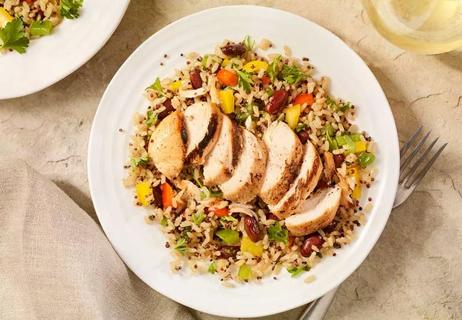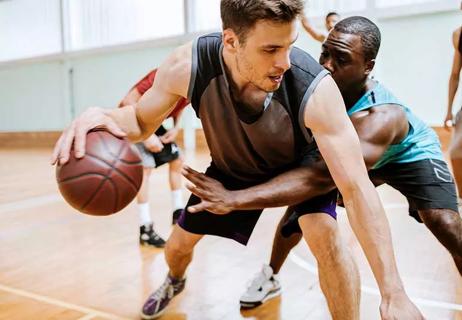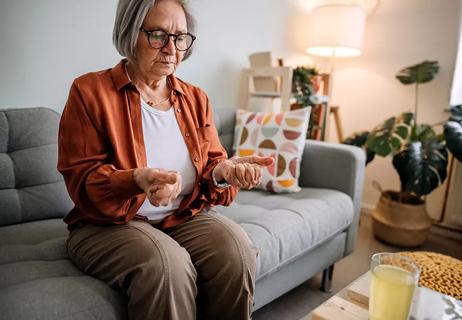Your metabolism may torch 1,300 to 2,000 calories daily with no activity

As your eyes scan this text, you’re burning calories. And if the thought of that “workout” made you chuckle just a little bit — well, you torched even more calories. (That seemingly silly fact is scientifically proven, too.)
Advertisement
Cleveland Clinic is a non-profit academic medical center. Advertising on our site helps support our mission. We do not endorse non-Cleveland Clinic products or services. Policy
The truth is that your body NEVER STOPS burning calories. That calorie blaze might resemble a five-alarm fire at certain times of the day, like when you’re exercising, but the flame is always lit.
Over the course of a day, your body’s natural calorie burn without any activity can range from 1,300 to more than 2,000, depending on your age and sex. (More on that in a bit.)
So, how and why do you burn calories reading, sleeping or logging long hours as a couch potato? Let’s do the math with endocrinologist and weight management specialist Marcio Griebeler, MD.
With so much talk about “calorie burn” focused on weight loss, the true reason behind your body’s calorie needs often gets overlooked. It’s not about the numbers on the scale. It’s about survival.
“To live, you have to burn calories,” says Dr. Griebeler. “Your body burns calories to pump your heart, to breathe, to think … to do everything.”
That constant burn to keep your body going is known as your metabolism. To get a little more specific, your basal metabolic rate (BMR) refers to the minimum number of calories your body needs to function.
So, as you’re doing nothing, your body is still busy and burning calories to keep all systems operational.
Advertisement
Now here’s where things get interesting.
While we all have a BMR, we don’t all share the same BMR. It’s not some standard formula like the Pythagorean Theorem. (That’s A² + B² = C², in case you’re rusty on your middle school math lessons.)
BMR, also known as your resting metabolic rate, varies widely based on factors such as:
Numerous online BMR calculators use the Harris-Benedict equation to provide a rough estimate of your body’s base calorie burn. Smartwatches that track fitness use this formula to spit out daily calorie-burn numbers.
“These online tools and watches can give you an idea about your metabolic rate, but they are by no means perfect,” notes Dr. Griebeler.
Following those explanations about daily calorie-burn estimates being tough to nail down, let’s try to come up with a few ballpark numbers anyway. (That’s why you started reading this article, right?)
So, let’s look at the BMR of an average-sized adult male and female in the United States at different ages. The size data comes courtesy of the U.S. Centers for Disease Control and Prevention (CDC).
The average adult male in the U.S. stands 5 feet, 9 inches tall (175 centimeters) and weighs 199.8 pounds (90.5 kilograms). For American females, the average is 5 feet, 3 1/2 inches tall (157 cm) and 170.8 pounds (77.4 kg).
Punch those measurements into a BMR calculator and here is the basic metabolism calorie burn by age if you spend the day lounging:
Basically, you burn about a calorie a minute just being you. At that rate, it should be noted that you’ve burned about 2 calories reading to this point!
In most people, your BMR accounts for about 60% to 70% of your daily calorie burn. The remaining calories get used when you actually start moving around and doing what people do every day.
Now, if you exercise, that’ll boost your total calorie burn for the day, notes Dr. Griebeler. But it won’t really impact your base metabolic rate.
Yes, you can — and the way to do it is simple enough: Add muscle, which it turns out is pretty needy when it comes to calories.
Muscle mass requires your body to use more energy even when it’s at rest. Think of it as cranking up the temperature on the calorie burn. “If you build muscle, you increase your basal metabolic rate,” explains Dr. Griebeler.
Advertisement
So, if you’re trying to lose weight, it’s important to preserve muscle while dropping pounds. Losing muscle during the weight loss process can actually slow your metabolic rate and base calorie burn — which is the opposite of what you’re trying to achieve.
Is talking about metabolism and calorie burn interesting? You bet! But it’s not something you should dwell on daily while trying to build a healthy lifestyle, says Dr. Griebeler.
Instead, put your energy toward staying fit and active. Exercise can help you burn off more calories and build calorie-needy muscles. (Learn how many calories you can burn doing certain activities.)
Eating healthy is also essential. “Make sure you’re getting enough protein, which you need to build muscle,” advises Dr. Griebeler. (Get tips for calorie counting for meals.) Don’t overlook the importance of stress and sleep management, either.
Bottom line? Even though your body is ALWAYS burning calories, don’t count on BMR alone to keep you trim and fit.
“Counting calories burned through your metabolic rate is not where we should be aiming,” says Dr. Griebeler. “Instead, focus on physical activity, managing your stress, sleeping well and eating right. Find your balance there.”
Advertisement
Learn more about our editorial process.
Advertisement

It depends on factors like your age, activity level and if you want to maintain, lose or gain weight

Avocados, cheese and nuts are high in calories but have big health benefits

Calorie counts on nutrition labels can be off by up to 20%

Focus on your body’s metabolic set point by eating healthy foods, making exercise a part of your routine and reducing stress

Calorie reduction can do more than just help you lose weight — it can also lower age-related inflammation

Consuming fewer calories than your body burns is a ‘calorie deficit’ that can lead to weight loss

Understand how your body creates energy to take your fitness to the next level

When free radicals don’t have antioxidants to keep them in check, they go rogue

The best parenting style balances enforcing rules and showing plenty of love

Tips include cutting back on sugar, focusing on exercise and managing stress

It can be harder to let go when you’ve invested time, energy and emotions — but it might be the healthier choice long term